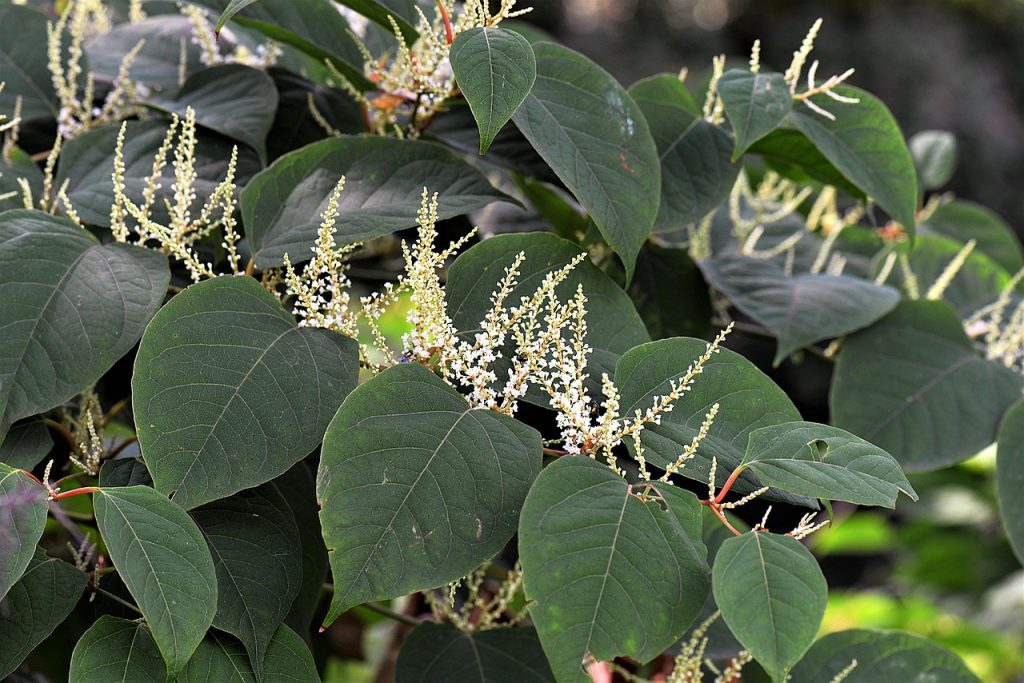If you’re buying or selling a property, the invasive plant known as Japanese knotweed can cause significant issues. However, resources can assist you if you know where to search. This guide will explain what Japanese knotweed is, how it may impact your mortgage, and your options for resolving it.
- ⭐ Avoid rejection – see your Approval Odds before you apply!
- ⭐ Accurate – backed by your credit report
- ⭐ Cheaper borrowing – personalised steps for mortgage success
Get a mortgage, not a rejection! Don’t leave your dream home to chance.
SEE MOREWhat's Included?
What is Japanese knotweed?
Japanese knotweed (Fallopia japonica) is a bamboo-like plant brought to the UK due to its beauty. It has a green heart or shield-shaped leaves that start dark red and turn green as they mature. The flowers bloom in spikes during late August and September and are cream.

Japanese knotweed is a fast-growing plant that can grow up to 2cm daily and reach heights of several metres. Its roots can also extend up to 3 metres deep into the ground. It is important to note that planting Japanese knotweed in your garden or causing it to grow in the wild is a criminal offence under section 14 of the Wildlife and Countryside Act.
How can Japanese knotweed affect your getting a mortgage?
The mention of Japanese knotweed can make buyers hesitant to purchase, leaving sellers in a challenging position. This is due to the plant’s rapid growth and deep roots, which can lead to significant structural damage to properties, including cracks in brickwork and tarmac and blockages in property drains.
Lenders are hesitant to provide mortgages for properties with Japanese knotweed or are located near it because they are concerned that any harm caused might make it difficult to sell the property. Even if you’re not planning on relocating, discovering Japanese knotweed after purchasing a property might create problems if you want to refinance your mortgage.
Help is available
While some lenders reject mortgage applications for properties with Japanese knotweed or even nearby areas, it is not impossible to get a mortgage approved. Certain providers evaluate applications on a case-by-case basis and consider the weed’s proximity to the property and the measures taken to remove it.
If you’re looking to borrow money from a lender to buy a property, the lender will assess the property’s value. The surveyor will also identify if there is any Knotweed present on the property and categorize it based on the risk it poses. The categories range from 1 to 4, with Category 1 suggesting Knotweed is present 7 meters away from the property to Category 4, which means Knotweed is already causing damage within the property boundary or it’s situated within 7 meters from the property.
If the Knotweed category is more severe, there is a higher chance of facing issues with a mortgage lender. To satisfy their requirements, it is necessary to provide evidence of a specialist’s assessment and treatment of Knotweed, along with an insurance-backed guarantee that extends for multiple years.
What you can do about it
Taking action quickly if you have Japanese knotweed is important, as it can grow rapidly and become a bigger problem if left untreated. Even if you’re not planning to move or remortgage for a while, it’s still essential to seek advice from a knotweed removal company and get a few quotes before choosing a service. Don’t try to remove it yourself, as it can quickly regrow if not done correctly.
Frequently Asked Questions
1. What is Japanese Knotweed?
Japanese knotweed is the most common of 4 invasive knotweed plant species in the UK. These are: Japanese knotweed Dwarf knotweed Giant knotweed Bohemian (hybrid) knotweed 3.
2. How can I identify Japanese Knotweed?
Japanese Knotweed has a distinctive appearance with bamboo-like stems and leaves shaped like a shield. It can grow up to 3m tall and has small white flowers in late summer ².
3. How does Japanese Knotweed spread?
Japanese Knotweed spreads through its roots (rhizomes) which can grow up to 3m deep and 7m horizontally. It can also spread through stem fragments ¹.
4. What are the legal implications of having Japanese Knotweed on my property?
If you allow Japanese Knotweed to spread from your property to someone else’s property, you could be prosecuted under the Wildlife and Countryside Act 1981. You could also be sued for damages if it causes damage to someone else’s property ¹.
5. How do I get rid of Japanese Knotweed?
You can get rid of Japanese Knotweed by using herbicides or by digging it out. You should not attempt to remove it yourself as it is difficult to get rid of completely and can cause it to spread further ¹.
6. What are the risks of Japanese Knotweed?
Japanese Knotweed can cause damage to buildings, walls, roads and other structures as its roots can grow through concrete and tarmac. It can also damage natural habitats by outcompeting native plants ².
7. How do I dispose of Japanese Knotweed?
You should not put Japanese Knotweed in your household waste as it is classified as controlled waste under the Environmental Protection Act 1990. You should contact your local council or a licensed waste carrier for advice on how to dispose of it safely ¹.
8. Can I sell my property if it has Japanese Knotweed?
You can still sell your property if it has Japanese Knotweed but you must declare it on the Property Information Form (TA6) which is part of the conveyancing process ¹.
9. Can I get a mortgage on a property with Japanese Knotweed?
It may be more difficult to get a mortgage on a property with Japanese Knotweed as lenders may be concerned about the potential damage it could cause to the property ¹.
10. How do I prevent Japanese Knotweed from spreading?
You can prevent Japanese Knotweed from spreading by not allowing soil or plant material containing rhizomes to leave your property, by disposing of it safely and by monitoring your property for signs of regrowth ¹.
References:
- How to stop Japanese knotweed from spreading – GOV.UK. https://www.gov.uk/guidance/prevent-japanese-knotweed-from-spreading
- Japanese knotweed / RHS Gardening. https://www.rhs.org.uk/weeds/japanese-knotweed
- The 10 areas where Japanese knotweed has EXPLODED. https://www.express.co.uk/life-style/property/1432706/Japanese-knotweed-hotspots-UK-knotweed-locations-evg









